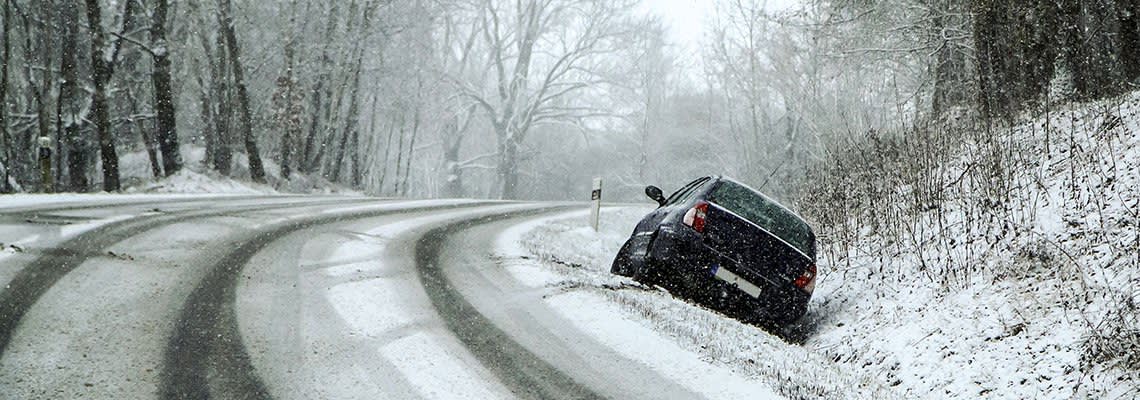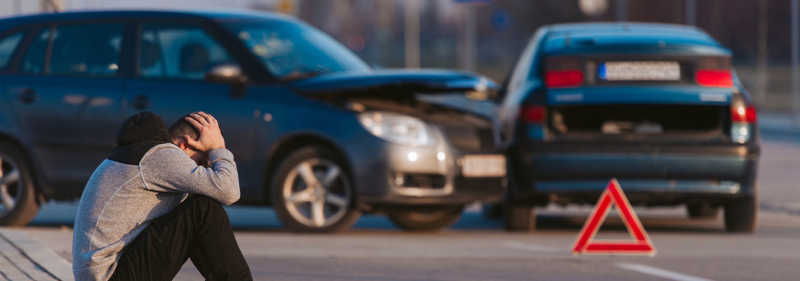
What to Know About Winter Weather Driving Accidents
Winter driving is hazardous enough. Add Colorado’s steep inclines and sharp curves to the mix and driving can be even more treacherous. In fact, according to the Colorado Department of Transportation (CDOT), snow, ice, and slush was a factor in nearly 15,000 crashes that occurred in 2019.
Winter driving requires more caution, attention, and skills than driving at other times of the year. Knowing what to do and what to avoid before you get behind the wheel might help you arrive safely at your destination. You should also know that the usual rules of the road don’t always apply in winter weather.
At Gama Law Firm, we bring a collective 60 years of experience in personal injury law to serve our clients in Aurora, Denver, Parker, Centennial, and Castle Pines, Colorado. If you have been involved in a crash in which winter weather played a role, you should understand what your liability might be, as well as the liability of others involved. If you have questions, we have answers.
Colorado is a Fault State
Colorado is a fault state for car accidents and insurance coverage. The negligent driver is responsible for all losses, including property damage, personal injury, and wrongful death. Winter weather conditions can complicate the issue of negligence and liability.
Liability for Weather-Related Negligent Behavior
Given the nature of Colorado weather and terrain, the state has enacted laws that specifically address road conditions.
Speed: As in other states, Colorado statutes establish maximum speed limits based on road type and vehicle size and weight. All limits are subject to a subpart of the statute which states: “No driver of a vehicle shall fail to decrease the speed of such vehicle from an otherwise lawful speed to a reasonable and prudent speed when a special hazard exists with respect to pedestrians or other traffic or by reason of weather or highway conditions.” Evidence of exceeding a safe speed is “prima facie,” meaning there is a presumption that a vehicle in a crash involving winter road conditions was exceeding a speed prudent for weather conditions, even if you were traveling at or below the speed limit. You must show evidence to the contrary if fighting a negligence claim.
Reckless or Careless Driving: Reckless driving is when a driver demonstrates a willful disregard for the safety of other people and property. Careless driving is when a driver disregards factors such as the type of roadway, curves, hills, and road conditions. Disregarding the weather conditions, in either case, makes a driver negligent in their duty to operate a vehicle with the highest standard of care.
Following Too Closely: A driver is also not allowed to follow another vehicle more closely than is reasonable and prudent as dictated by factors such as the speed of other vehicles and the amount of traffic, but also the condition of the roadway. The normal rules about maintaining adequate distance between your vehicle and the vehicle in front of you don’t apply if winter weather makes it virtually impossible for you to avoid striking that vehicle if it slows or stops.
Car Safety
To improve the safety of vehicle travel on roadways affected by winter weather, especially those with steep inclines, Colorado has laws regarding the use of chains and sufficient tire tread depth to improve traction.
Trucks and other heavy commercial vehicles are required to have chains on their tires. All passenger vehicles must have snow or all-weather tires with a tire tread depth of at least 3/16”. Vehicles other than all-wheel and four-wheel drive must be equipped with chains.
Due to traction challenges when either ascending or descending steep roadway inclines, CDOT often closes roadways entirely to vehicles weighing less than 16,001 pounds.
Tips for Driving in Winter Weather
There are several tips you can use to increase safety when driving in winter weather:
Make sure your car is sufficiently cleared of ice and snow before driving, including mirrors and windows.
Make sure your wipers, flashers, heater, and defroster are in good working order.
Fill up your gas tank and top off your antifreeze and windshield fluids.
Drive at a consistent, safe speed, especially when going uphill to keep momentum and avoid abrupt acceleration and braking.
When going downhill, put your car in a low gear and only tap your brakes when needed to avoid sliding or burning them out.
Of the three common driving actions — accelerate, brake, and turn — make sure you do only one at a time when driving in winter weather.
Slow down and keep plenty of distance between your vehicle and the vehicle in front of you.
Keep your headlights on low to keep the light from reflecting off of the snow and decreasing visibility.
Always wear your seatbelt.
If you are involved in or come upon a crash, remain in your vehicle. It’s the safest place to be.
Pay attention to signage regarding exits, hazards, grades, and directions.
Never drive impaired by alcohol, illegal drugs, or medications.
Experienced Colorado Personal Injury Attorneys
The first thing you need to remember when you have been in an accident involving winter weather conditions is that an auto insurer will attempt to discount your claim by attempting to prove that you were totally or partially negligent. You need a personal injury attorney on your side who has the experience and tenacity to fight the insurance company for fair compensation.
At Gama Law Firm, we know how to investigate the circumstances of the crash, seek documentation of your injuries, financial losses, and other damage, help you navigate the claims process, and, if needed, litigate your case in court. Our team at Gama Law Firm has delivered the services of a large firm with the attention of a small firm for thousands of clients in Aurora and Denver, Colorado, as well as the surrounding communities.
Don’t handle an insurance company on your own. We are ready to help. Call our office today to schedule a free consultation to discuss your claim.

